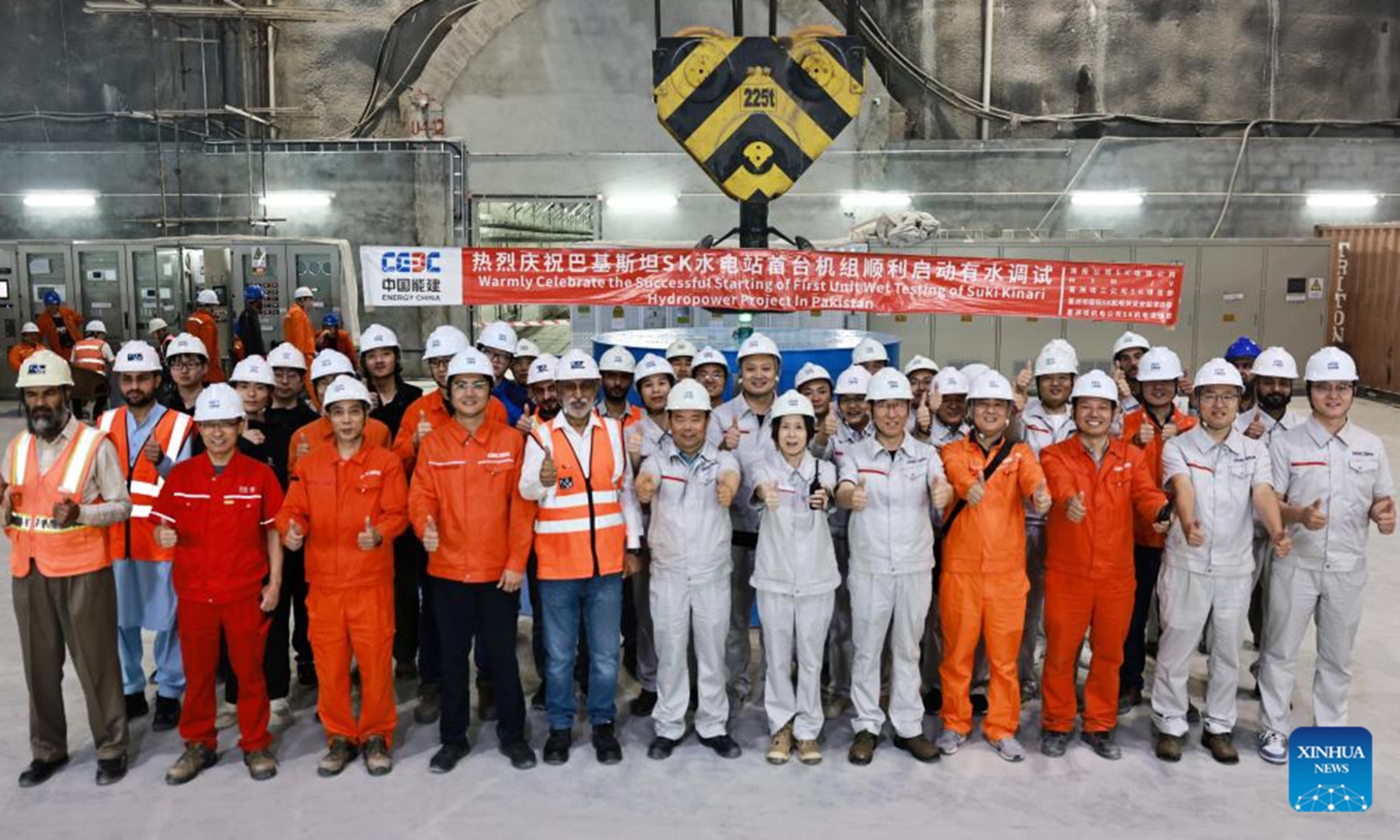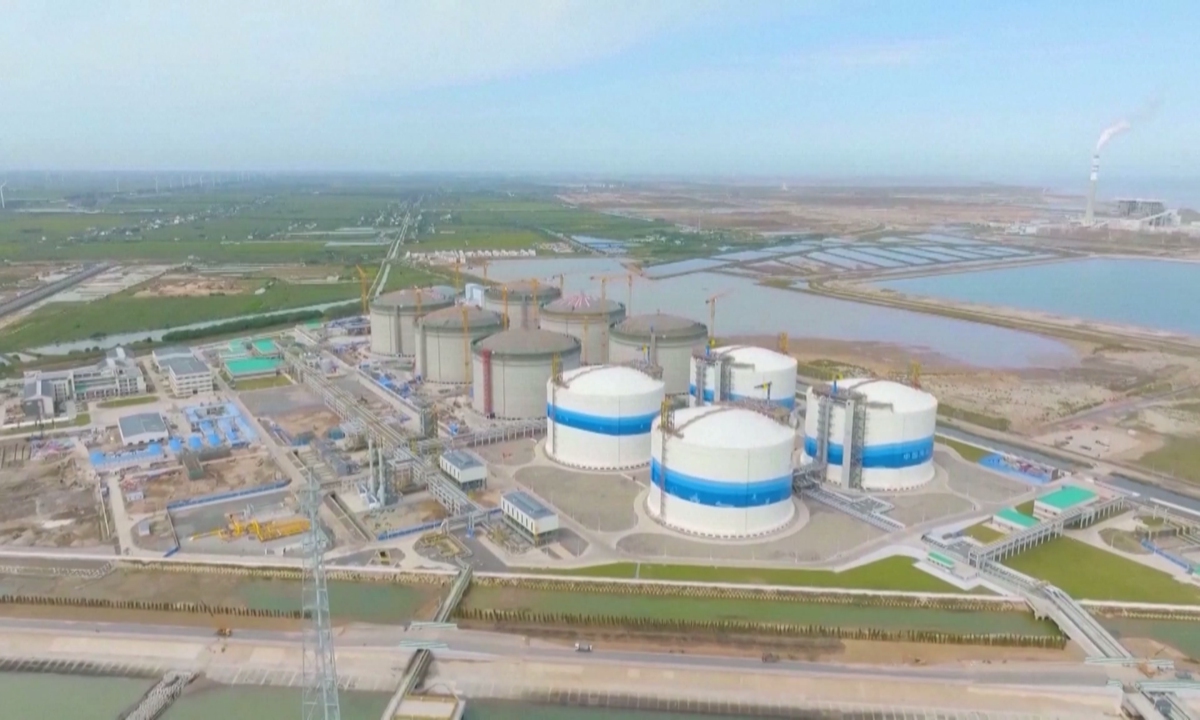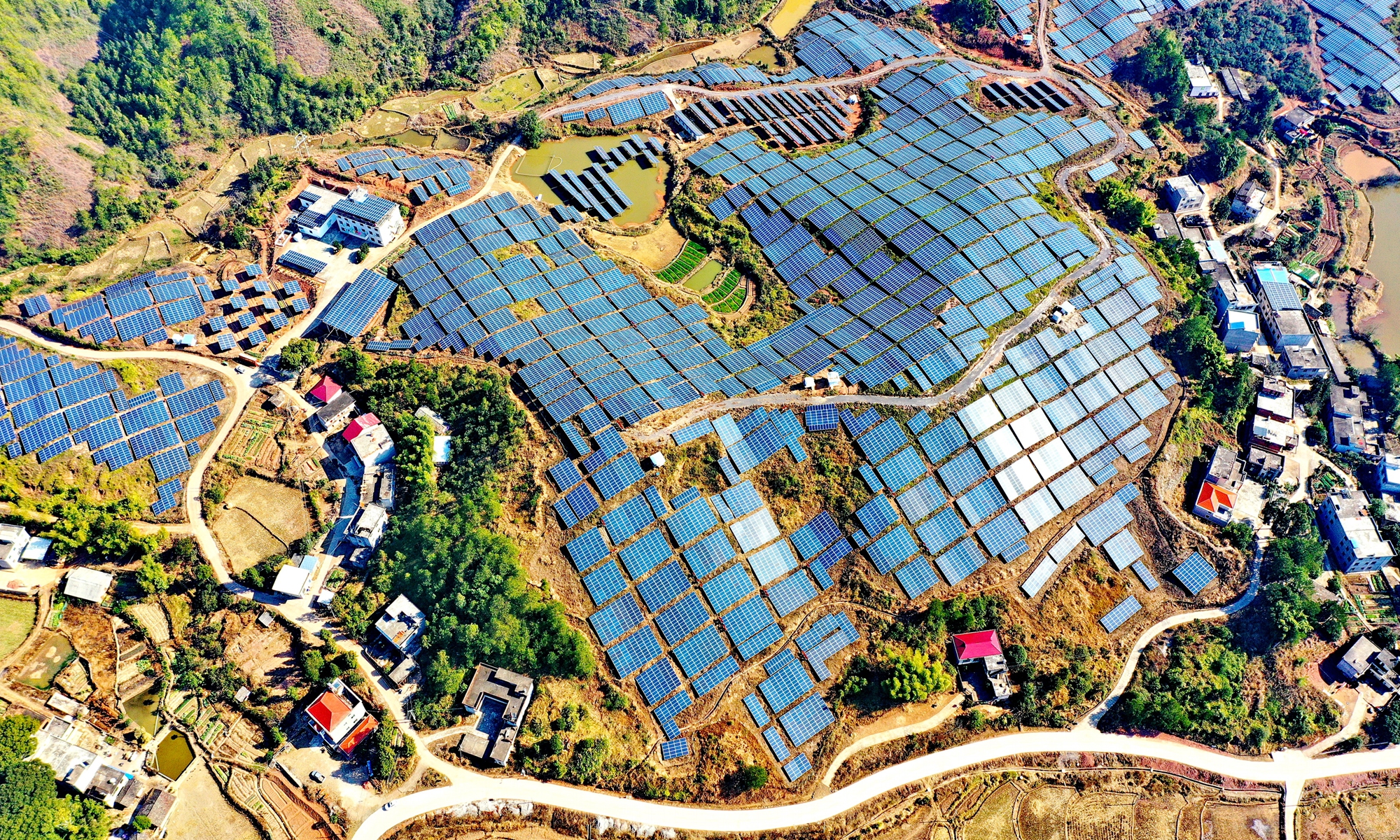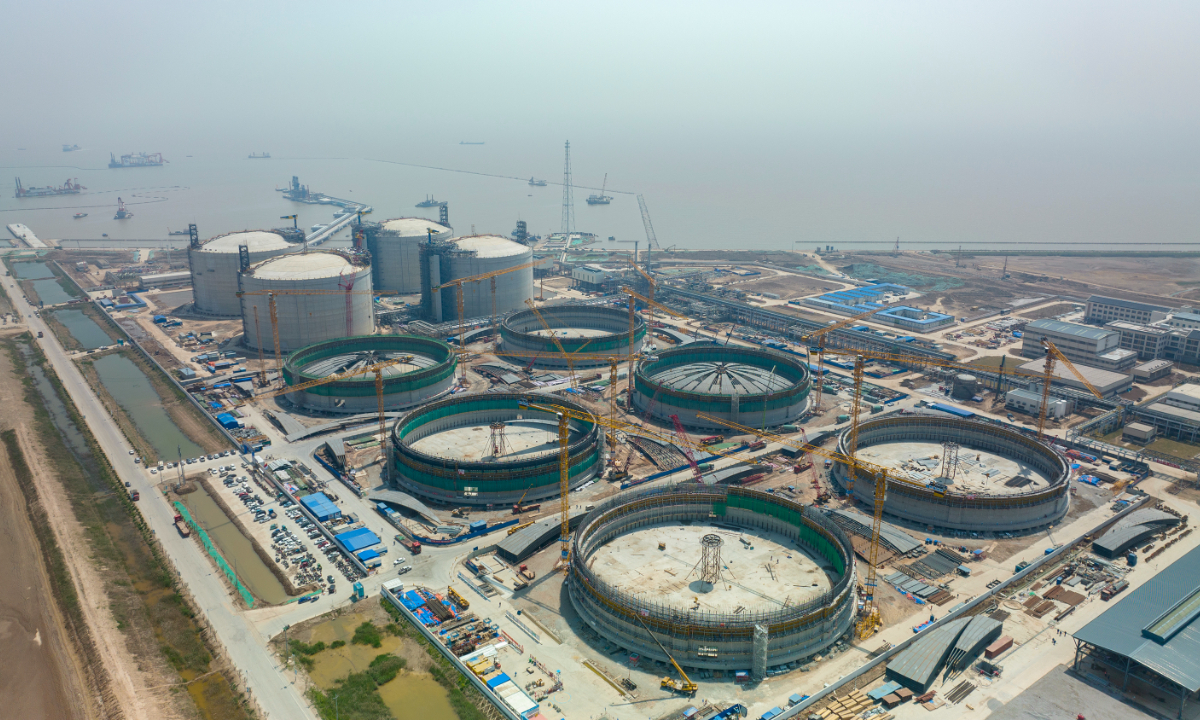China-Pakistan green cooperation gains pace, a viable model of sustainable development: expert

Chinese and Pakistani engineers celebrate the starting of first unit wet testing of Suki Kinari Hydropower Project in Mansehra district of Khyber Pakhtunkhwa province, Pakistan, June 16, 2024. The first unit of the China-built Suki Kinari Hydropower project in northwest Pakistan was started up and formally entered the wet testing phase on Sunday. (Photo: Xinhua)
Pakistan and China are deepening cooperation in emerging green sectors through the China-Pakistan Economic Corridor (CPEC), Mustafa Hyder Sayed, executive director of the Pakistan-China Institute told the Global Times in a recent exclusive interview.
Sayed viewed the green CPEC project as a global model of people-centered, win-win cooperation that significantly advances new energy transition and sustainable economic development.
The comments came ahead of the 8th China-South Asia Expo, which is scheduled to take place in Kunming, Southwest China's Yunnan Province, on July 23-28. During the Expo, green energy will stand out as a crucial sector where the two regions aim to enhance extensive and diversified business cooperation, according to the Chinese Ministry of Commerce (MOFCOM).
Sayed highlighted accelerating Chinese industry relocation and technology transfer to Pakistan to enhance bilateral cooperation across green sectors. "This process will fuel local economic development and energy transition while allowing Chinese firms to benefit from Pakistan's lower production costs, facilitating China's green engagements with Central Asia and the Middle East," he said.
CPEC, a flagship project under the Belt and Road Initiative (BRI), is now upgrading into a green economic corridor. Sayed noted that the initiative has significantly benefited Pakistan by addressing its energy crunch, improving intra-country and cross-regional connectivity, developing local infrastructure, and revitalizing ports for enhanced commerce.
Pakistan is committed to developing renewable energy projects and investing in eco-friendly initiatives within the green CPEC by absorbing and utilizing Chinese advanced expertise and technologies, Sayed said, acknowledging the necessity of securing financial support from China.
"Drawing investments from Panda Bonds, which are yuan-denominated debts issued by foreign entities in China, along with green bonds issued by Chinese banks, will contribute to funding green projects and fostering sustainable development in Pakistan," Sayed said.
Since its establishment in 2013, CPEC had cumulatively created 236,000 jobs for Pakistan and contributed to the addition of 510 kilometers of highways, 8,000 megawatts of electricity generation capacity, and 886 kilometers of expressway network across the country, according to official data.
Various energy projects under CPEC, such as wind energy and hydroelectric projects in northern Pakistan, are the country's notable efforts toward diversifying the energy matrix. Chinese investments can help Pakistan reduce dependence on imported fuels while supporting its vision of reaching 30 percent of green energy capacity in the power mix by 2030, according to Sayed.
In June, the first unit of the China-built Suki Kinari Hydropower project in northwest Pakistan entered its wet testing phase, marking a major step towards official operation and power generation, furthering the progress of renewable energy cooperation under the CPEC, Xinhua News Agency reported.
Looking forward, Sayed said that more joint ventures are expected, focusing on localizing solar panel cells manufacturing in Pakistan.
"Our way is to facilitate low-carbon investment from China into Pakistan, establish clear green investment criteria for Chinese investors, as well as ensure projects' financial viability, security, and profitability," he said, adding that Pakistan is eager to cooperate with and learn from China.
Pakistan-China cooperation exemplifies people-centric cooperation between countries, Sayed said. "China has been prioritizing ecological and environmental protection as integral to human development, focusing more on improving people's living standards, which Pakistan views as a model for its modernization," he added.
In late May, China and Pakistan announced five new corridors for the second phase of CPEC construction, including the Innovation and Green Corridors, according to Pakistan media reports. Pakistani officials have vowed to attract more Chinese investment for joint ventures in renewable energy and modern agriculture projects.
Unlike Western models, China's economic growth is based on shared prosperity, extending mutual benefits to its partners, he said, highlighting this model's crucial role in reshaping the global landscape, while some Western countries' new Cold War mentality is overshadowing world peace and the rise of the Global South.
He criticized these countries' ongoing smear campaign against China as part of their containment strategy to hinder China's rise. They are also trying to create controversy around the BRI cooperation by labeling China's investments as placing debt traps. However, these attempts will fail, Sayed said.
The Global South is looking to China for leadership, as the future of the world economy is shifting toward the East, while the Western powers will seek confrontation to uphold their hegemony, he noted, urging the West to engage constructively with China in all potential areas, avoiding over-politicizing economic and trade issues.
Sayed is optimistic about China's growth prospects, noting despite external challenges, the Chinese economy remains resilient amid efforts for high-quality development. China's new development pattern of "dual circulation" will transform its economy into one driven by both domestic and international demand, promising a sustainable path of development, he said.



